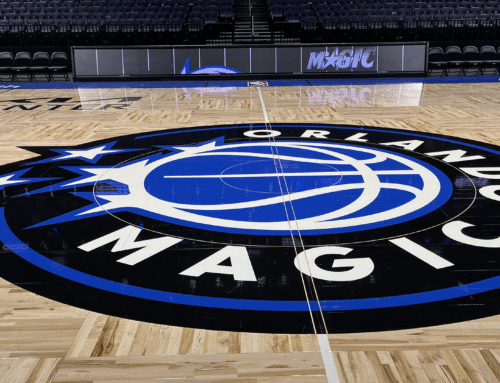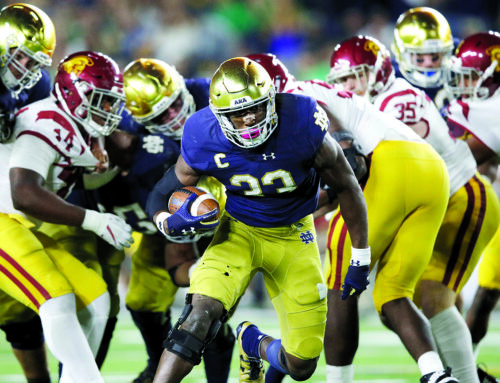Here’s a hot take for you: Red zone touchdown rate is overrated. It’s often used as a measure of how successful a team is on either offense or defense; it’s often considered, especially by many fans, to be a good predictor of how “elite” that side of the ball is for a team or of how one team will do against another. Well… (Picture me saying this in my best Skip Bayless voice.) (I just threw up in my mouth a little.) I’m here today to tell you, folks, that that idea is completely wrong.
Obviously scoring is better than not scoring, and scoring more is better than scoring less. I won’t argue with anyone on that point. The thing is, though, that red zone touchdown conversion rate doesn’t correlate to winning, and that’s true for both sides of the ball. There are some really putrid teams that are very good at converting in the red zone, and there are some nearly as putrid teams that very good at preventing conversions in the red zone. What we need to do is search for additional context around the stat and see if we can find some version of it that holds up better.
How Good is Good?
For example, here’s a look at the offensive red zone conversion rates for some generally-accepted “good” offenses last year:
Baylor – 2nd, 72.7%
Michigan State – 19th, 68.6% (not a “good” offense per se, but bear with me for a second)
Oklahoma – 26th, 66.7%
Ohio State – 38th, 64.9%
Oregon – 45th, 64.3%
Clemson – 70th, 60.0%
Louisville – 78th, 58.6%
Notre Dame – 79th, 58.5%
Florida State – 89th, 56.5%
Alabama – 90th, 56.5%
This list is obviously all over the place. Did it surprise you that national champion Alabama ranked 90th? That their title game opponent, Clemson, ranked 70th? Michigan State and Oklahoma ranked 71 and 44 spots higher than their semifinal opponents, and each were demolished. Baylor’s ranking isn’t surprising, right? Funny thing, though – in their three losses last year, to Oklahoma, TCU, and Texas, they went 10-for-13 in red zone touchdowns for a sterling 76.9% conversion rate.
Offensively, red zone touchdown conversion rate doesn’t really mean much for either the overall quality of the team or for head-to-head results between teams. Defensively, the story is the same.
Digging Into the Numbers
Last year’s top ten teams by offensive red zone TD rate were, in order, Navy, Baylor, Georgia Tech, Eastern Michigan, Purdue, BYU, Bowling Green, Houston, Western Kentucky, and North Carolina State. The 3-4-5 teams, Georgia Tech, Eastern Michigan, and Purdue, combined to go 6-30 last year. Bowling Green joined them as top ten red zone offense teams that were unranked.
But defense wins championships, you say! Fair enough – here are your top ten teams by defensive red zone TD rate, in order: Boston College, Appalachian State, UConn, Vanderbilt, Toledo, Michigan, Mississippi State, New Mexico, Temple, and Washington. Boston College, UConn, and Vandy combined to go 13-24 last year. Michigan is the only ranked team in this group.
Only five of the final AP Top 25 teams ranked in the top 25 in offensive red zone touchdown rate, and only eight ranked in the top 25 in defensive rate. None ranked in the top 25 in both stats. So, as a predictor of individual game outcomes or season outcomes, there are obviously some serious issues with relying too much on these metrics. If you look at the differential between red zone touchdown conversion rate on offense and defense, though, a clearer trend starts to emerge. Things are still a bit scattered, but we can start to draw some lines between groups.
Twenty of the final AP Top 25 teams had a positive differential – the five that didn’t were #11 Notre Dame (-7.4), #16 LSU (-4.2), #19 Oregon (-5.4), #20 Oklahoma State (0, impressively), and #23 Northwestern (-16.8). Further, of the 28 FBS teams that had at least a .700 winning percentage last season, only four had a negative differential: Notre Dame, LSU, Northwestern, and Georgia (-7.14). Only four teams in the country last year were in the top 25 in both the offensive and defensive metrics, and all had winning records: Appalachian State (11-2), Mississippi State (9-4), Northern Illinois (8-6), and South Florida (8-5).
Going down the top five teams in the final AP rankings… Alabama was 31st in rate differential at +9.8. Clemson was 62nd at +2.9. Stanford was 7th at +21.5. Ohio State was 56th at +3.6. Oklahoma was 23rd at +13.2. That pattern more or less holds throughout the rankings; your offensive and defensive conversion rates don’t matter too much, and even the exact value of your conversion differential doesn’t matter too much, but if you have a negative differential you’re going to have a hard time having a good season.
A stat that works a little bit better is points per red zone trip – it correlates a bit more tightly with winning than conversion rate does, as loosely evidenced by the .686 winning percentage for top 20 points-per-trip differential teams versus the .658 winning percentage for top 20 conversion rate differential teams. Things shuffle around a bit, but overall the conclusions hold; there are good teams with bad ratings in each category, and bad teams with good ratings in each category, but precious few if any bad teams with good ratings in both.
So what does it all mean?
Well, to me, it means that red zone touchdown conversion rate, on both offense and defense, is an overvalued stat. There’s just way too much that impacts a game outside of those stats, and way too much context around each stat, to make them meaningful on their own. The conversion differential has a stronger correlation to winning, but in a very broad sense that essentially amounts to “put more points on the board than the other guy and you’ll be OK.” We won’t mind if you roll your eyes when somebody mentions red zone stats at your next tailgater. You’ll be justified.





Are you using “positive differential” to convey a team’s offensive red zone conversion percentage is higher than the defensive conversion? So offense is the name of the game?
Yep, it’s a very simple metric – offensive conversion rate minus defensive conversion rate. A positive differential means (theoretically) you’re better at scoring red zone touchdowns than you are at preventing red zone touchdowns. Bill Connelly (the creator of the S&P+ rankings) using a much more complicated – and meaningful – stat based on points per trip inside the 40 that includes adjustments for strength of opponent, garbage time, etc. But he doesn’t publish that for all schools and it’s not so easy to calculate from scratch.
I just spent ten minutes reading this to learn that if your offense scores more often than you allow your opponent to score, you’re a better team.
=P
Well, we also could extrapolate (a la 2015 Wake Forest/Boston College) that if you allow teams to score touchdowns, it will make up for a tepid red zone offense…
Your comment reminded me of Chuck letting a team in the endzone so we could get our offense on the field again. Sigh.
Original comment was was totally tongue in cheek. Made me laugh. I realize there’s more to it than that.
Do not search for tongue in cheek gif at work, t’will be a mistake.
Yes, but now you have stats. And as we all know, stats don’t lie.
Red zone conversions are now on par with momentum and the need to recruit lots OL.
You can never have too many momentums.
Mo mentums, mo problems.
[…] Is red zone touchdown rate overrated? […]
It seems like points per possession for both offense and defense would be a much better stat to look at. What’s weird is you never hear that stat talked about. It is talked about a ton in basketball, but never mentioned in football. Is there a reason? Am I missing something?
The advanced stats guys – Football Outsiders and our own Mike B. and their ilk – talk about points per drive basically as a component of more complicated stats. Connelly’s points per trip inside the 40 is an example; Brian Fremeau’s FEI Offense ratings also, in a labyrinthine way, essentially take points per drive into account.
I think the main thing is that football conventional wisdom seems much more entrenched than basketball conventional wisdom, and it doesn’t matter that a lot of football conventional wisdom is either outdated or just flat wrong. It’s been accepted as gospel for 100 years, and that’s that.
The main problem with the red zone stats, in my humble opinion, is that the red zone itself is a fairly arbitrarily defined area. Connelly’s zone, from the 40 in, makes more sense, since you’re starting right at the edge of field goal range. Of course as you get closer your scoring probability and expected points increase, but cutting off the zone at the 20 is just kind of random.
Interesting that places use it as a component of other stats. I did see that Connelly was experimenting with it. Yeah, the red zone is very random stat, especially for teams that often score outside of it. I think the biggest knock on points per possession would be to account for the strength of the other team. But, you have to account for that with most stats anyway.